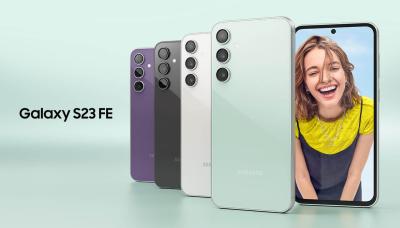Xbox Series X vs Xbox Series S

If you are a Microsoft Xbox fan and probably wondering which Series Console you should go for this season.
Which should you buy, the Xbox Series X or the Xbox Series S? On the very first look at these two consoles, it might not seem like there’s a big difference between these two consoles. But there are major differences between their features, power, usage, and capabilities.
The main thing is there is particularly no clear winner in the Xbox Series X vs Xbox Series S battle. The console which will be right for you depends on what you’re expecting from your gaming system. Moreover, each console got its own benefits but while buying it comes down to two main things: your budget and your preferences. How much do you need a disc drive? And how high is native 4K output in your list of priorities?
We have done an in-depth review of the Xbox Series X and Xbox Series S, which means we’re familiar with the strengths and weaknesses of both consoles. In our opinion, Xbox Series X is undoubtedly the powerhouse of the two. But the Xbox Series S has a lower price on its side. Read on to help you decide which of the two you should buy to suit both your budget and your setup.
Xbox Series X vs Xbox Series S: key differences
If we had to highlight three key differences between the consoles, it should be these: the Xbox Series X has a 4K UHD Blu-ray drive that's capable of playing physical games and movies while the Xbox Series S does not.
The Xbox Series X has a large 1TB SSD that can store, on average, around 16 games while the Xbox Series S has a 512GB SSD that only stores around four to five; and the Xbox Series X renders games in native 4K at 60 frames-per-second, while the Xbox Series S targets 1440p.
Otherwise, both will have the same user interface, the same controller, and the same Xbox Velocity Architecture that enables features like Quick Resume. Both have the same media apps like Netflix, Amazon Prime Video, Hulu, and more, and more importantly, both can play exactly the same games.
From what we’ve seen so far, people are drawn to the sheer power of the Xbox Series X. But don’t overlook the advantages of the more affordable model. Both work well and both can serve a different audience.
Let's break them down even further.
First up is the Xbox Series X, which is Microsoft’s flagship console. It’s capable of 4K graphics and is currently one of the most powerful consoles available. On paper the specs are impressive, and it has a compact tower-style design that manages to be both unique and unobtrusive. It’s expensive, though, at AU$1149.
The Xbox Series S is far more affordable and a less powerful alternative for you to consider. It’s digital-only, so you’ll be at the mercy of the Microsoft Store for any purchases you make. That said, Xbox Game Pass, Microsoft's Netflix-like subscription service and Project xCloud, lets gamers stream games from the cloud and alleviates some of the digital-only restrictions. Overall, the Series S' price point is aimed at those who are willing to compromise on power for a much better price.
Xbox Series X vs Xbox Series S specs
The Xbox Series X is a beast of a console that's truly brought us into the latest generation of gaming. Here’s what’s inside the diminutive tower of power:
- CPU: Eight-core 3.8GHz (3.6GHz with SMT) custom AMD 7nm
- GPU: 12 teraflops 1.825GHz (locked)
- RAM: 16GB GDDR6
- Frame rate: Up to 120 fps
- Resolution: Up to 8K
- Optical: HD Blu-Ray disk drive
- Storage: 1TB NVMe SSD
With a 12 teraflop GPU capable of up to 120 frames per second, the Xbox Series X is twice as powerful as the Xbox One X, Microsoft’s former flagship console. It supports various exciting next-gen features such as ray tracing, variable-rate shading, and even support for 8K resolution.
The Xbox Series X makes the wait when booting up games or loading new levels a thing of the past thanks to its custom-designed super-fast NVMe SSD. The SSD is part of the console’s new Velocity Architecture, which allows multiple games to be suspended in the background while you’re playing something entirely different. Everything is more responsive and snappier as a result, too.
Microsoft is also trying to make latency a thing of the past on Xbox Series X. Forward-thinking features such as Auto Low Latency Mode (ALLM), communication improvements to the Xbox controller, and Variable Refresh Rate (VRR) support take full advantage of TVs with HDMI 2.1 support.
In comparison, here are the Xbox Series S specs:
- CPU: Eight-core 3.6GHz (3.4GHz with SMT) custom AMD 7nm
- GPU: 4 teraflops at 1.550GHz
- RAM: 10GB GDDR6
- Frame rate: Up to 120 fps
- Resolution: 1440p with 4K upscaling
- Optical: No disk drive
- Storage: 512GB NVMe SSD
The Xbox Series S packs a lot of power for such a small box. The console targets a resolution of 1440p instead of native 4K (some games do support native 4K, though), and is capable of 120fps gaming. It has an almost identical CPU to the Xbox Series X, but the GPU is considerably less powerful, and it comes with 10GB of GDDR6 RAM instead of 16GB.
That might sound like a big compromise on paper, but remember the Xbox Series S is targeting 1440p/60fps instead of 4K/60fps. This means it needs less power to reach its pixel count, but it can still deliver all the next-gen features Microsoft is focusing on like ray tracing and 120fps.
There’s no disk drive, of course, and the storage is almost halved compared to the Xbox Series X. That’s admittedly concerning for a digital-only model, but Microsoft is undoubtedly hoping people are taking advantage of Project xCloud which involves no downloads at all as games are streamed from Microsoft’s remote data servers.
The storage of both consoles can be expanded, however. Microsoft is selling a 1TB proprietary expansion card that plugs into the back of the console. Xbox One games can also be stored on a standard external hard drive to help free up space.
The Xbox Series S and Xbox Series X also support Spatial Sound, including Dolby Atmos, and Dolby Vision via streaming apps at launch. Dolby Vision support for gaming was introduced post-launch but is now available.
How to buy Xbox Series X and Xbox Series S without breaking your budget?
When you are looking forward to buying these consoles but are short on a budget well do not worry about that option as we are here to help you with exactly what you need to get them.
The buy now pay later service that we provide will give you options to get your items now and pay later in 4-10 interest-free installments. This will help your pocket as you can make the payments in parts over time with Afterpay, Openpay, Wizpay, Lattitude Pay etc.












